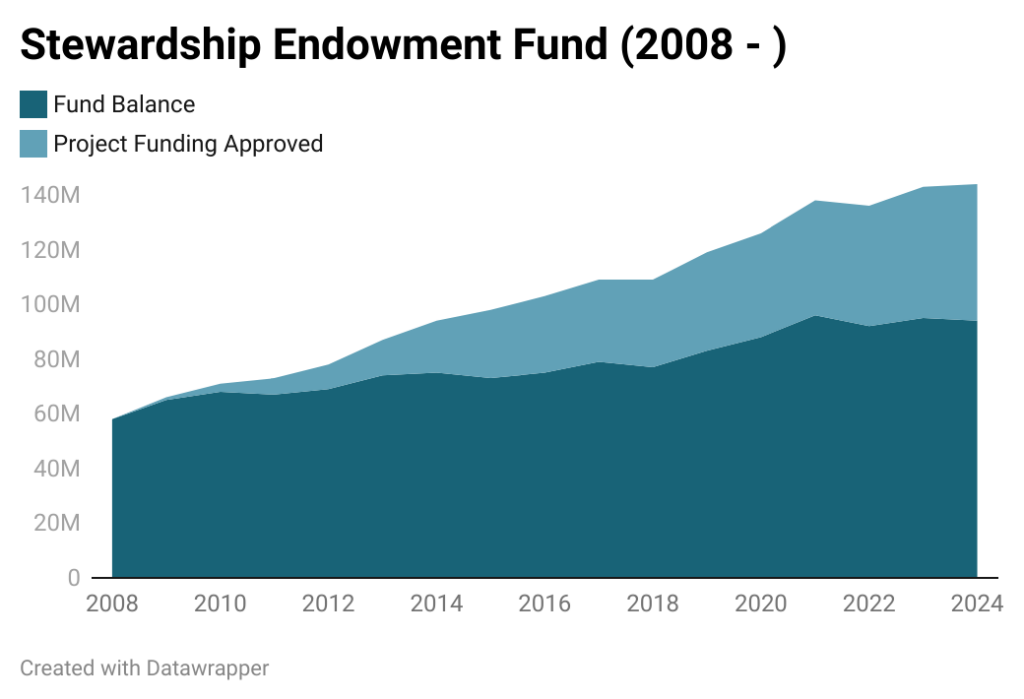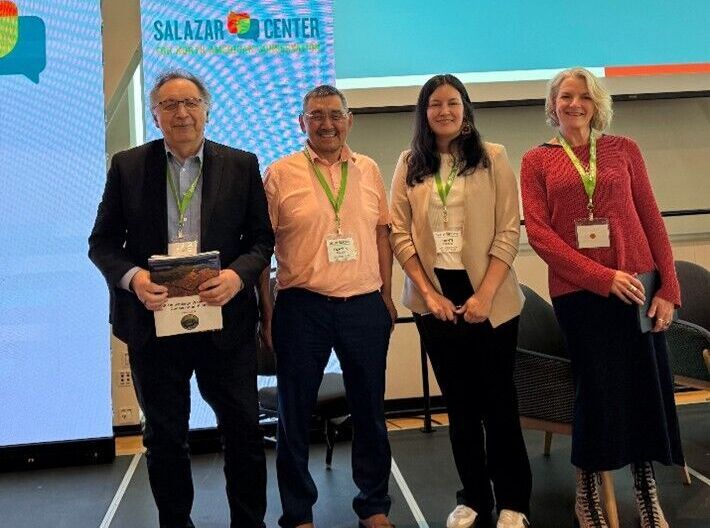Estimated Reading time

12 Mins
In Canada, Indigenous-Led PFPs Set to Deliver Enduring Conservation Outcomes with Global Impact
Indigenous-led conservation finance initiatives were centre stage at the Salazar Center’s 2025 Conservation Symposium, setting a strong precedent for self-determined sustainable economies and healthy ecosystems for generations to come.

Indigenous communities have been leading environmental stewardship for millennia using Traditional Knowledge that inherently protects the planet’s biodiversity. Using the project finance for permanence (PFP) model, Indigenous communities are securing lasting protections for sensitive ecosystems and long-term financing to sustain stewardship, Guardian programs, conservation efforts, and community-led economic development.
In Canada, four groups of Indigenous Nations are using the PFP model and working with federal, provincial, and territorial governments to protect their territories in the Great Bear Sea, the Northwest Territories, the Qikiqtani region in Nunavut, and the peatlands in Northern Ontario. The federal government has pledged up to $800 million in support of these four Indigenous-led PFPs:
- Great Bear Sea PFP (British Columbia)
- Our Land for the Future PFP (Northwest Territories)
- SINAA Qikiqtani PFP (Nunavut)
- Omushkego Wahkotowin PFP (Northern Ontario)
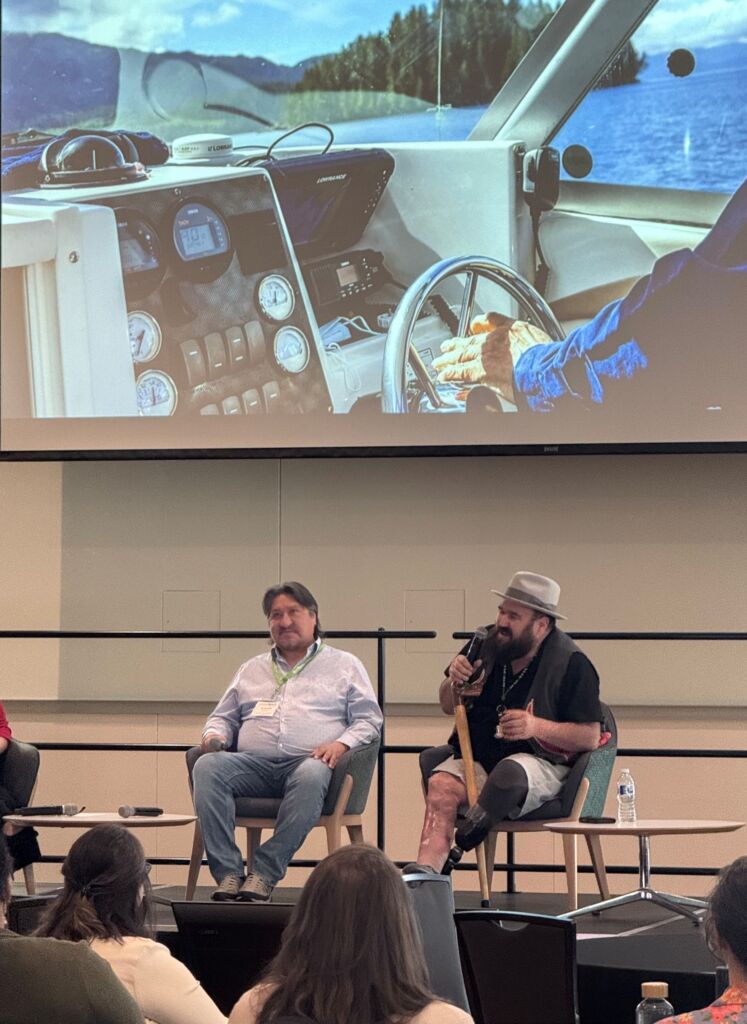
At the Salazar Center’s International Symposium on Conservation Impact, held on xʷməθkʷəy̓əm Musqueam territory (at the University of British Columbia) in May 2025, representatives from the four PFPs shared their visions for stewardship in their territories and how PFP funding will support collaborative governance of protected areas and contribute to global “30×30” efforts to protect 30 per cent of lands and waters by 2030.
Coast Funds, which administers conservation financing for the Great Bear Sea PFP, partnered with the Salazar Center on program development and hosted a knowledge exchange, parallel to the conference, with the four Indigenous-led PFPs in Canada.
In a panel on place-based conservation, Coast Funds Chair Dallas Smith, who is a member of Tlowitsis Nation and President of Na̲nwak̲olas Council, reminded conservation leaders that ecosystem protections on their own aren’t enough to ensure a sustainable future for First Nations and their territories.
“You have to do the ecological part, but you have to do the economic part too, for community well-being,” said Dallas.
In the Great Bear Rainforest and Haida Gwaii, First Nations have demonstrated that, for conservation efforts to have lasting success, governments and partners must also invest in local communities and economies, creating opportunities for Indigenous people to thrive in their homelands.
“It’s not just about 30×30 and it’s not just about conservation goals that were established elsewhere,” said Eddy Adra, Coast Funds CEO. “It’s about community. It’s about self-determined sustainable finance with Indigenous Peoples who have the foresight to take care of the land, which will take care of all of us at the same time.”
Building on this sentiment, Coast Funds remains committed to supporting Indigenous-led conservation by facilitating events, storytelling, and gatherings, and continuing to support peer-peer learning with the First Nations we serve, while also engaging with partners and Indigenous Nations in other parts of the world who are interested in the PFP / Great Bear model.
Great Bear Rainforest PFP Financing
The world’s first PFP, the Great Bear Rainforest PFP administered by Coast Funds, combined financing for both conservation and economic development.
- The Economic Development Fund (2008-2024) was established with $60 million and allocated between 27 First Nations. Over 16 years, the fund delivered $61.4 million to participating First Nations for 235 projects.
- The Stewardship Endowment Fund (2008-) was established with $56 million and allocated between 23 First Nations. The endowment has delivered $52 million (so far) to participating First Nations for 248 projects.
Indigenous-led PFPs a Model for Scale and Durability
Jump to: Great Bear Sea PFP | Our Land for the Future PFP | SINAA / Qikiqtani PFP | Omushkego Wahkohtowin
- Olayuk Akesuk (Qikiqtani Inuit Association), Lawrence Martin (Mushkegowuk Council), Dahti Tsetso (Our Land for the Future – NWT), Darcy Dobell (Great Bear Sea PFP), and facilitator Eddy Adra (Coast Funds), discuss PFPs as a model for scale and durability at a panel. (Photo: Logan Griffiths / Coast Funds.)
- Lawrence Martin, Olayuk Akesuk, Dahti Tsetso, and Darcy Dobell on stage at the 2025 International Symposium on Conservation Impact. (Photo: Richard Paton / QIA)
Project finance for permanence (PFP) is a model for structuring large-scale conservation investments to support lasting protection of ecosystems. Instead of protecting one site a time and securing incremental funding, PFPs assemble upfront financing from multiple sources, securing ecological protections and policy measures in a single ‘closing’ process.
As an outcome of the Great Bear Rainforest agreements in 2007, First Nations on the coast of modern-day British Columbia established what has since been recognized as the world’s first PFP – which included the creation of Coast Funds to administer $120 million for Nations’ investments in a conservation economy.
At a Salazar Symposium panel on the PFP model, Darcy Dobell, advisor to the Great Bear Sea PFP, stressed that although PFPs are intended to deliver durable finance for conservation, in reality all the existing PFPs still grapple with significant financial gaps.
These large-scale conservation and community development initiatives support the protection and growth of natural capital, alongside investments in governance and workforce capacity – all of which benefits communities, governments, and industries alike. There is both a strong need and a compelling rationale to seek diversified sources of revenue beyond the current government-philanthropic funding model. This is a challenge for conservation finance practice around the world.
“We need to see those benefits reflected in our economic models much more than we currently [do]. There’s still a lot more work to do on this front,” Darcy says.
Great Bear Sea PFP
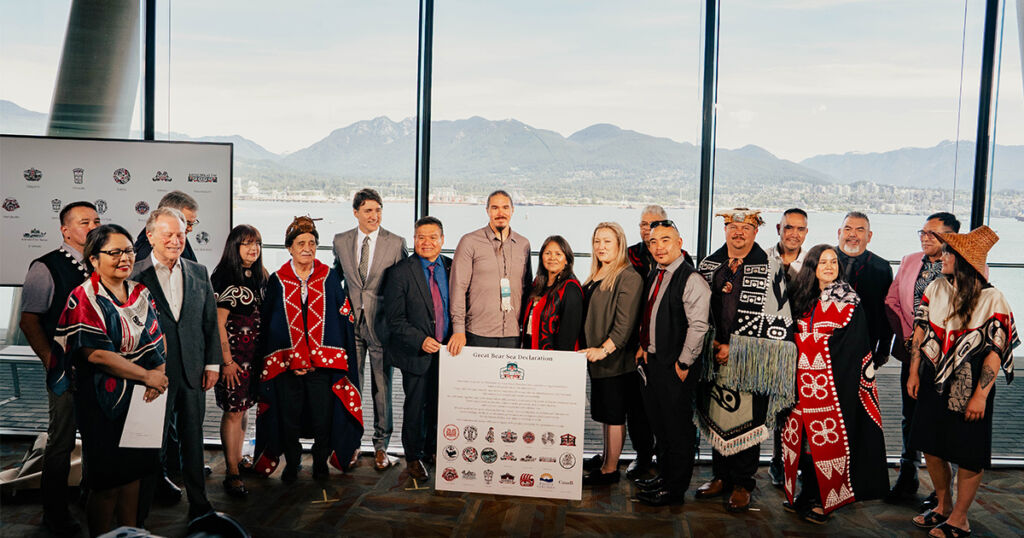
In June 2024, 17 First Nations alongside the Government of Canada, Province of British Columbia, and philanthropic partners, signed the Great Bear Sea PFP closing agreements. The PFP secures $335 million in funding for marine stewardship and Indigenous-led economic development in coastal communities.
The Great Bear Sea PFP was developed by the Coast Solutions Task Group (CSTG), a team mandated by leadership of the participating First Nations to develop the PFP and co-governance agreements with Crown governments.
The PFP builds on the Nations’ work over many years, in partnership with Canada and BC, to develop a detailed network of marine protected areas nested in bioregional marine spatial plans and collaborative governance arrangements.
“This will be the world’s largest Indigenous-led, collaboratively-governed marine protected area network,” says Darcy.
Over the next 20 years, First Nations expect to use Great Bear Sea PFP funds to support creation of more than 3,000 new jobs and 200 businesses in marine governance and stewardship, transportation, renewable energy, sustainable fisheries, eco-cultural tourism, and local manufacturing and processing. Together, the marine protected area network plan, collaborative governance agreements, and investments in stewardship and human well-being demonstrate the viability of Indigenous-led conservation, stewardship, and economic development.
“The amount we’re working with is still quite modest,” Wuikinuxv Nation Chief Councillor Danielle Shaw reminded attendees of a symposium panel on North America’s marine biodiversity. “Our communities are contributing a lot of our own resources, while balancing other priorities. This is one piece of a very complex puzzle.”
Funding Sources
- Government of Canada: $200 million
- Province of British Columbia: $60 million
- Philanthropic partners: $75 million
In addition to this up-front capital, the finance model for the Great Bear Sea PFP includes the development of a new revenue stream from private-sector sources. The CSTG is continuing its work on behalf of the participating Nations to secure this sustainable finance mechanism.
PFP Current Stage
Funding allocations now available to participating First Nations.
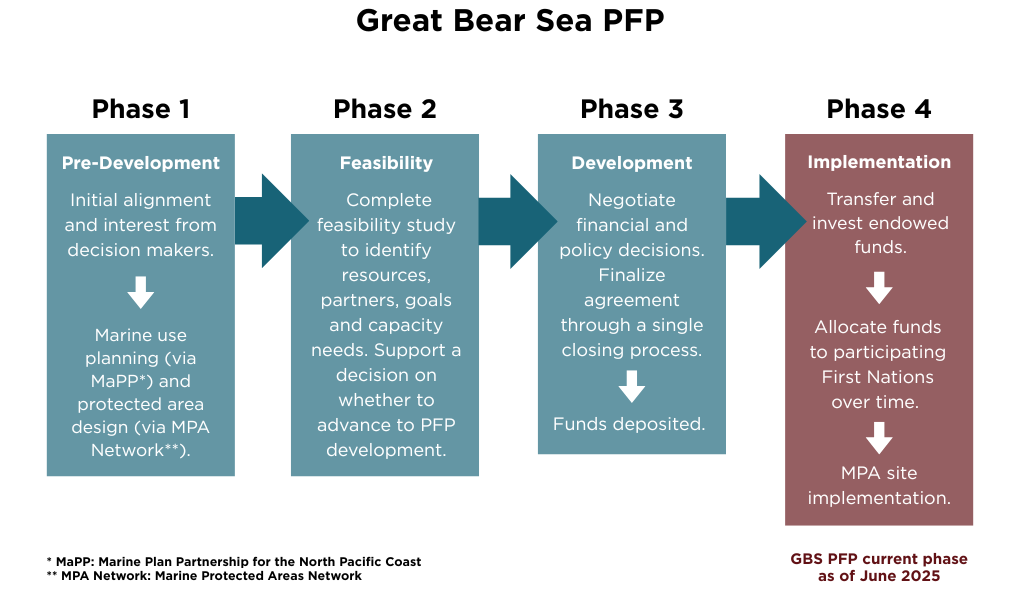
Contact
Meghan Saunders
Senior Project Manager, Coast Funds
meghan@coastfunds.ca
NWT: Our Land for the Future PFP
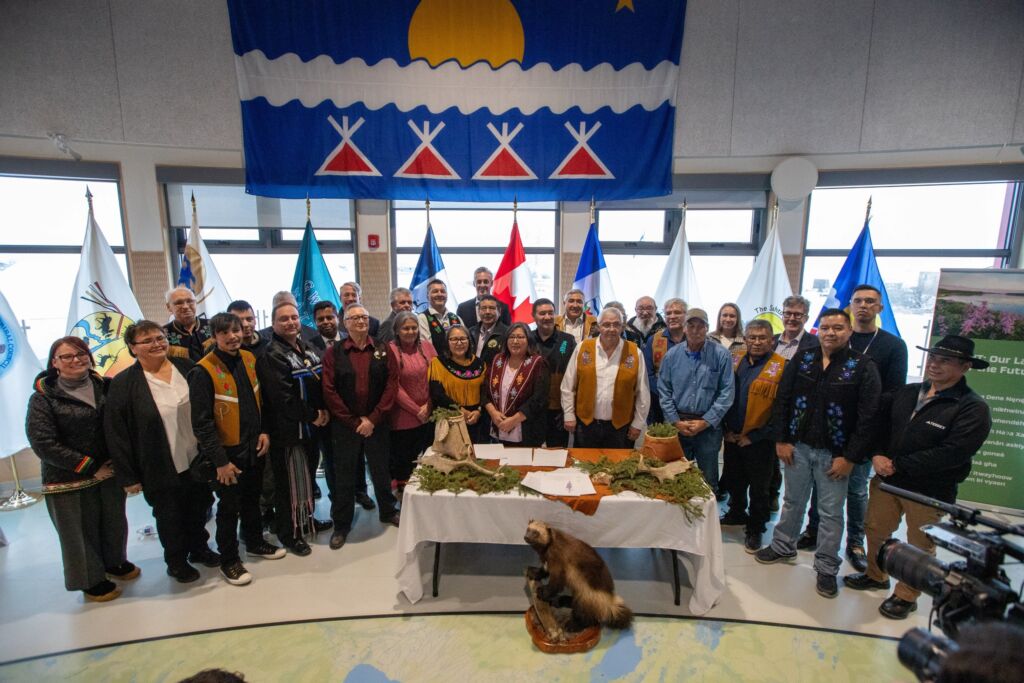
In November 2024, 22 Indigenous Governments, the Government of Canada, the Government of the Northwest Territories, and private donors gathered in Behchokǫ̀ to sign the NWT: Our Land for the Future agreement, securing $375 million to support the largest Indigenous-led land conservation and stewardship initiative in the Northwest Territories of Canada.
“What’s exciting about this initiative is that it’s going to resource our communities to take leadership in a meaningful way,” said Dahti Tsetso, CEO of the Northwest Territories Our Land for the Future Trust, at the Salazar Symposium.
The $375 million fund will support 10 years of Indigenous-led conservation and stewardship, including the establishment of new protected and conserved areas, Guardian and stewardship programs, language programs, and cultural revitalization. The team estimates that the funds will be used to support hundreds of jobs, climate research initiatives, economic diversification, and assist communities with the increase of wildfires, low water levels, and other climate impacts.
The NWT: Our Land for the Future PFP helps address the loss of biodiversity and impact of climate change in the Northwest Territories and will contribute to Canada’s 30×30 commitments – while also embracing Indigenous Peoples’ self-determination and right to steward their lands and waters as they have done for millennia.
“One of our understandings is that, ‘we are a part of the land, and the land is a part of us’,” says Dahti. “In Indigenous culture, we honour that connection in our entire way of thinking.”
Funding Sources
- Government of Canada and Government of Northwest Territories: $300 million
- Philanthropic partners: $75 million
PFP Current Stage
PFP agreement signed. The Our Land for the Future interim secretariat supporting partners are to complete all early implementation efforts towards a fully operational trust, and anticipates opening funding to participating Indigenous communities in the current fiscal year.
SINAA PFP
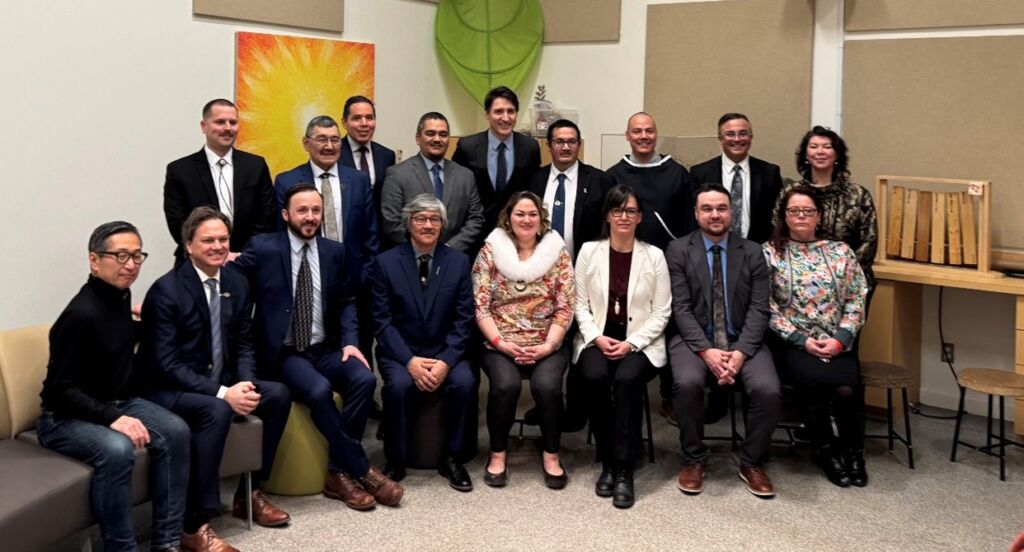
In February 2025, Qikiqtani Inuit Association (QIA), the Government of Canada, and philanthropic partners, along with the Aajuraq Conservation Trust Fund Society, signed the SINAA agreement, establishing new and enhanced environmental projects and Inuit governance of Qikiqtani lands and waters.
With the Government of Canada committing $200 million and philanthropic partners contributing a further $70 million. QIA will use the funds to support conservation, Inuit employment, and Inuit-led governance in the Qikiqtani Region, covering the easternmost, northernmost, and southernmost administrative region of Nunavut.
Community consultation was an essential part of the SINAA PFP development process. Over the course of multiple visits spanning 13 communities, QIA ensured community members’ questions were addressed and their ideas actively considered.
“The most important thing is that it’s us, as Aboriginal people, running our own conservation,” says Olayuk Akesuk, President of Qikiqtani Inuit Association.
“We’re very proud of what we do…It’s hard work supporting current and future marine protection across the Qikiqtani region through commitments by Inuit, in partnership with Canada and donors, to conserve 12.28 per cent of Canada’s 30×30 marine conservation targets.”
The Qikiqtani Region encompasses 10 per cent of Canada’s land mass and is home to over 20,000 people, 80 per cent of which are Inuit. Accessible only by sea and air, the region is experiencing the accelerated effects of climate change firsthand. Inuit leaders and Guardians are working to care for the region and their people to ensure these concerning changes are addressed
Founded on Inuit stewardship and led by communities across the Qikiqtani Region, the SINAA PFP will support Qikiqtani Inuit to create opportunities to improve community well-being, economic prosperity, and the health of their lands, waters, and wildlife through an Inuit-led regional conservation economy.
FUNDING SOURCES
- Government of Canada and Government of Northwest Territories: $200 million
- Philanthropic Donors: $70 million
Philanthropic partners include: Pew Charitable Trust, Enduring Earth Network
PFP CURRENT STAGE
PFP agreement signed. Development stages for funding model.
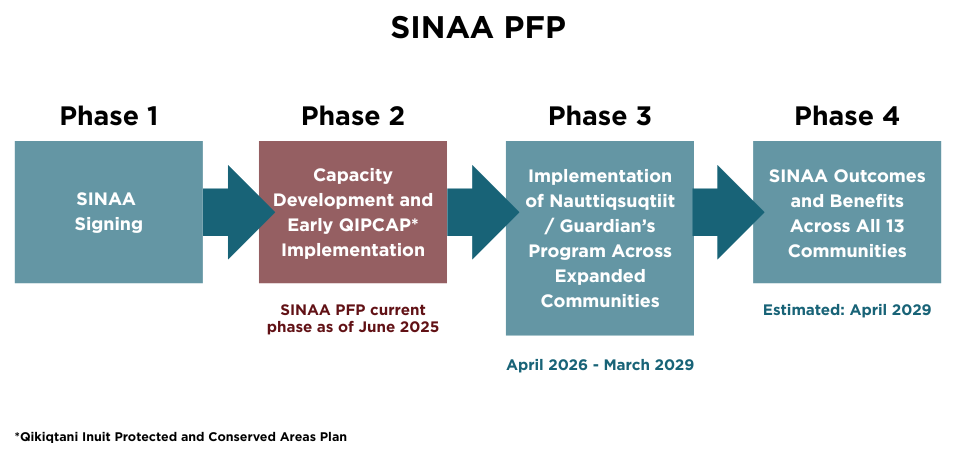
CONTACT
Karen Flaherty
Director, Strategic Communication
Qikiqtani Inuit Association
kflaherty@qia.ca
Omushkego Wahkohtowin: A Path Forward PFP
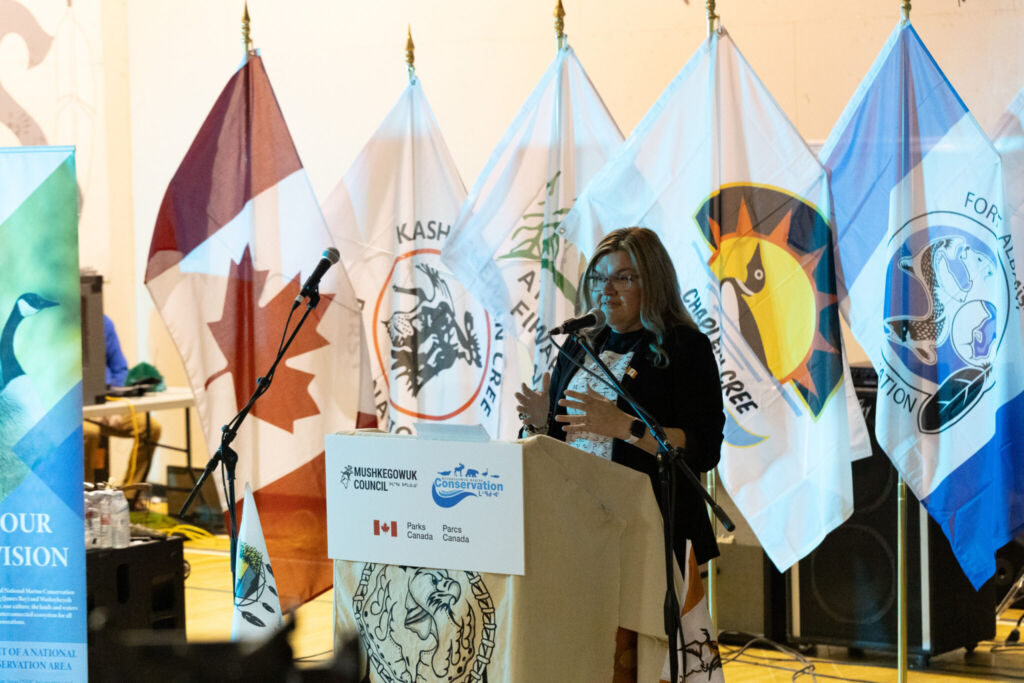
Omushkego, meaning the strong people, and Wahkohtowin, meaning kinship, reflect the values of the Omushkego Cree communities. The Omushkego Wahkohtowin PFP is the amalgamation of 50 years of leadership from the Mushkegowuk Council, which is fighting to protect what their people call the world’s Breathing Lands.
The Breathing Lands, spanning Weeneebeg James Bay and Washaybeyoh Hudson Bay, are the third largest wetlands in the world, one of the richest stores of carbon on Earth (approximately 30 billion tonnes), and the homelands of the Omushkego people. Incredibly diverse and home to large populations of polar bears, belugas, walruses, and kelp forests, the protected areas, also known as National Marine Conservation Areas (NMCAs), could also include burial grounds, hatcheries, nesting areas, and traditional hunting areas.
In recent decades, the natural resources found within Mushkegowuk territory have also drawn attention from the mining industry. (At the time of publication, First Nations have raised concerns over the Government of Ontario’s introduction of Bill 5 – legislation that will accelerate the permitting and approvals process for mining and major infrastructure projects. Bill 5, which is being fast-tracked through the Legislature, has involved little consultation with impacted First Nations.)
“We live in this area where critical minerals are now being discovered,” says Lawrence Martin, director of Mushkegowuk Lands & Resources. Since 2002, over 35,000 mining claims have been made in the area, about 12 times the size of Toronto. “We’ve been working with Ontario to try and be partners so that we can actually mitigate any type of impact that this kind of mining can have in the area.”
Wahkohtowin kinship is an important sentiment that leads the development of the PFP, ensuring there is a “redevelopment of relationships” throughout the process, Lawrence says.
“There’s a lack of trust that’s been there for hundreds of years,” he says. “Some of our communities don’t want to sign up [to the PFP] because they don’t trust the government.”
With a window of opportunity closing, the Mushkegowuk Council is devoted to putting community first, taking the time required for members to understand the commitment, in relation to other pressing community needs. “We have to do it together.”
First Nations support for the PFP is strong, with growing momentum among communities recognizing its role in long-term protection and prosperity. Nine Nations have agreed to take part in the Omushkego Wahkohtowin PFP. Once realized, the funds will go towards supporting the creation of jobs, conservation infrastructure and accommodation, boosting start-up funding and operational costs for small businesses linked to conservation, developing a network of cultural and artistic practitioners, and supporting the Omushkego Institute.
PFP CURRENT STAGE
Feasibility study endorsed by Parks Canada. Awaiting further engagement with the Government of Ontario.
PFPs and Well-Being Outcomes
The Great Bear Rainforest PFP showed the world what’s possible when First Nations work together and build partnerships that balance conservation with economic development and the broader needs of communities.
For almost 20 years, Coast Funds has worked with First Nations to measure and track the incredible impacts of investments in community well-being throughout the region.
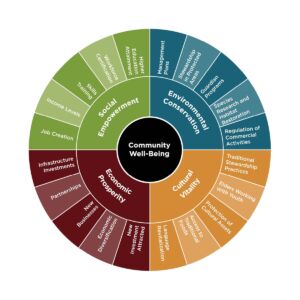
Coast Funds published a 15-year impact report, Sustaining People and Place, that details how conservation financing has benefitted communities and supported the protection of rainforest ecosystems.
READ SUSTAINING PEOPLE AND PLACE>
Developed in partnership with First Nations, Coast Funds’ outcomes framework includes 20 indicators that help track First Nations’ achievements in environmental conservation, social empowerment, economic prosperity, and cultural vitality.
From 2008 to 2024, participating First Nations have:
- Created 1,416 new jobs and supported 654 skills training activities
- Delivered 444 research and habitat restoration initiatives
- Carried out 91 projects that help revitalize Indigenous languages
- Invested $120.3 million through Coast Funds and attracted a further $324.5 million in investment to the region
- Created, acquired, or expanded 144 businesses
Knowledge Exchange: Key to Protecting the Future
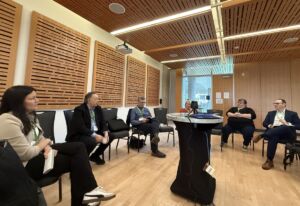
The Salazar Symposium, held in May, brought together over 150 conservation leaders from across North America for networking and knowledge exchange. As a Symposium partner, Coast Funds facilitated knowledge exchange sessions during the conference, bringing together representatives from the four PFPs in Canada.
During their breakout sessions, PFP proponents deepened relationships and shared strategies for navigating common challenges, such as funding distribution, governance models, capacity building, and long-term sustainability.
Sharing Knowledge on a Global Scale
Through events, storytelling, and gatherings, Coast Funds continues to play an important role in supporting knowledge exchange locally and internationally with Indigenous Governments, philanthropic partners, and organizations with values-aligned initiatives.
In recent months, Coast Funds worked with Australian not-for-profit, Pollination Foundation, to bring First Nations and regional organizations together for meaningful conversations around conservation financing tools, which the Foundation recapped in a recent report.
Investing in Indigenous-led Stewardship
Since its founding, Coast Funds has supported the growth and development of First Nations’ Guardian and stewardship programs along the coast. These programs help fulfill First Nations’ inherent rights and responsibilities across their territories, but more work needs to be done.
“You have to keep going and you have to know what those next steps are,” said Dallas at the symposium opening panel. “To actually chart it out and implement it is what makes these Indigenous-led conservation initiatives so much more real and so much more impactful.”
Through its programs and services, Coast Funds is responding to First Nations’ requests to strengthen stewardship finance on the Great Bear Coast. Learn about our services supporting First Nations-led fundraising, and how Coast Funds works with First Nations, investing at scale to build Nations’ endowed funds.
Let’s connect. Contact our development team to learn more.
Recordings from the 2025 International Symposium on Conservation Impact are available on YouTube.

